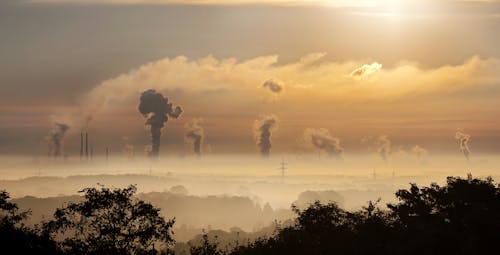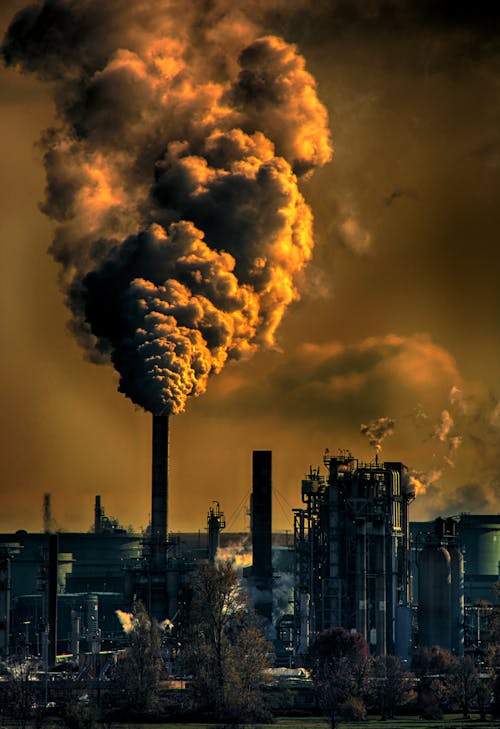Air Pollution: All You Need To Know

Air pollution occurs when a toxic substance or non-toxic substance but in excess, whether biological molecule, gaseous substance or particulates is released into the atmosphere. So, a physical, biological or chemical alteration to the air in the atmosphere can be termed as pollution. Air pollution might have a direct or indirect effect on living things and may cause disease, allergies or death in some cases in humans; it can also damage crops while depositing some dangerous substance that can be harmful to humans and animals. Both human activity and natural processes can generate air pollution.
Air pollution are more common in the urban area due to industrialization. Most production companies emit dangerous chemicals to the atmosphere during the cause of their daily activities.
Air pollutants
- Carbon monoxide (CO), CO is characterized by its colorless and odorless nature. CO is a toxic gas of which is a product of fuel combustion such as natural gas,wood or coal. Vehicles are the major emitters of this gas. CO has being linked to many lung diseases.
- Carbon dioxide (CO2), CO2 though a natural component of the atmosphere and an essential compound for plants can posed serious problem to our planet when too much of it is released into the atmosphere. Is is termed "the worst climate pollution" for its role in greenhouse effect.
- Nitrogen oxides (NOx), its One of the most prominent air pollutants, this reddish-brown toxic gas has a characteristic sharp, biting odor. It generates from high temperature combustion and released during thunderstorm by electric discharge.
- Sulfur oxides (SOx), SOx is known to cause acid rain which can be harmful to the environment and its living things. It’s produce by volcanoes and in various industrial processes.
- Volatile organic compounds (VOC) – VOCs are a well-known outdoor air pollutant. They are categorized as either methane (CH4) or non-methane (NMVOCs). Methane is an extremely efficient greenhouse gas which contributes to enhanced global warming. The aromatic NMVOCs benzene, toluene and xylene are suspected carcinogens and may lead to leukemia with prolonged exposure. 1,3-butadiene is another dangerous compound often associated with industrial use.
- Free radicals connected to airborne fine particles are linked to cardiopulmonary disease.
- Atmospheric particulate matter(APM), APM can occur naturally from volcanoes, dust storms or from human activities such as, burning of fossil fuel, industrial processes, power plants. APM can cause allergies and lead to dangerous diseases such as heart disease, cancer( lungs cancer).
- Radioactive pollutants, generated by nuclear explosions, nuclear events, war explosives, and natural processes such as the radioactive decay of radon which can cause cancer.
- Some toxic metals, such as mercury and lead, at their compound state causes air pollution.
Health effect
Cancer: Air pollutants more especially particulate are the major cause of lung cancer and cardiovascular diseases. Several millions are known to have died due to direct or indirect effects of Air pollution. Children in areas exposed to air pollutants are said to commonly suffer from pneumonia and asthma.
Acid Rain: Harmful gases like nitrogen oxides and sulfur oxides are released into the atmosphere during the burning of fossil fuels. When it rains, the water droplets combines with these air pollutants, becomes acidic and then falls on the ground in the form of acid rain. Acid rain can cause great damage to human, animals and crops.
Infants: studies have shown that ambient levels of air pollution have been associated with preterm birth and low birth weight.
Central nervous system: Numerous studies have shown that air pollution exposure also affects the central nervous system. it was discovered that early exposure to air pollution causes the same damaging changes in the brain as autism and schizophrenia. Study also shows that air pollution also affected short-term memory, learning ability, and impulsive.


Controlling Air Pollution
Large amount of fossil fuels are burnt to produce electricity in most countries. Reducing the amount of fossil fuels to be burned can help save the environment from degradation. Most effective is the switch to clean power sources such as wind power, solar power, hydro power which don't cause air pollution.- A very effective means to reduce air pollution is the transition to renewable energy. Petrol driven car should be replaced with electric cars.
- Since plant makes use of carbon(iv)oxide, afforestation should be encouraged to check excessive emissions of carbon(iv)oxide by industries.

No comments:
Post a Comment